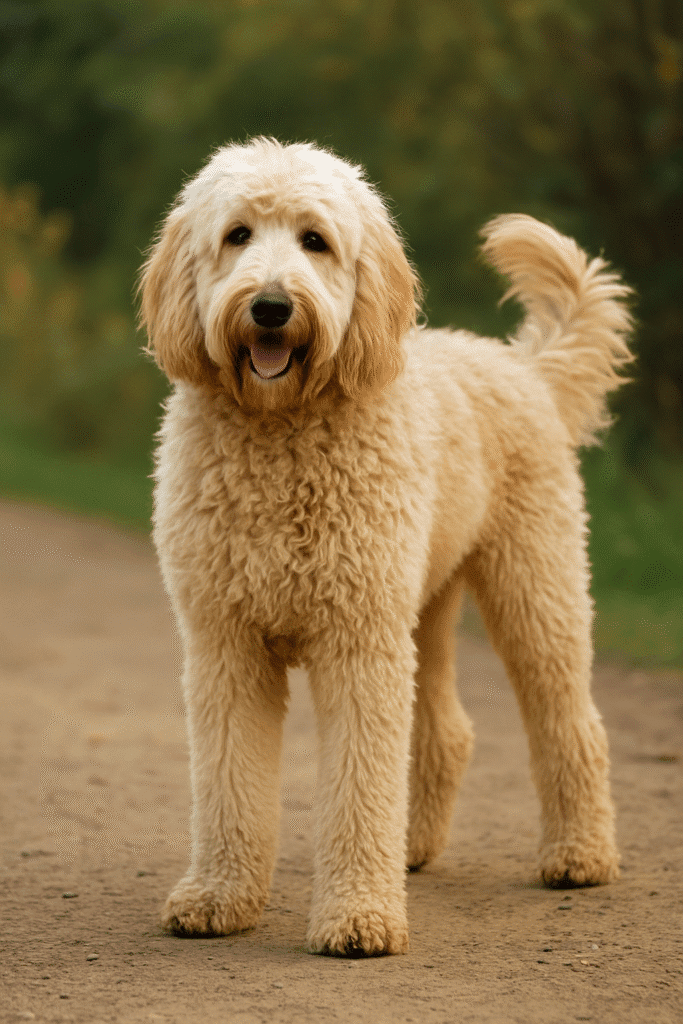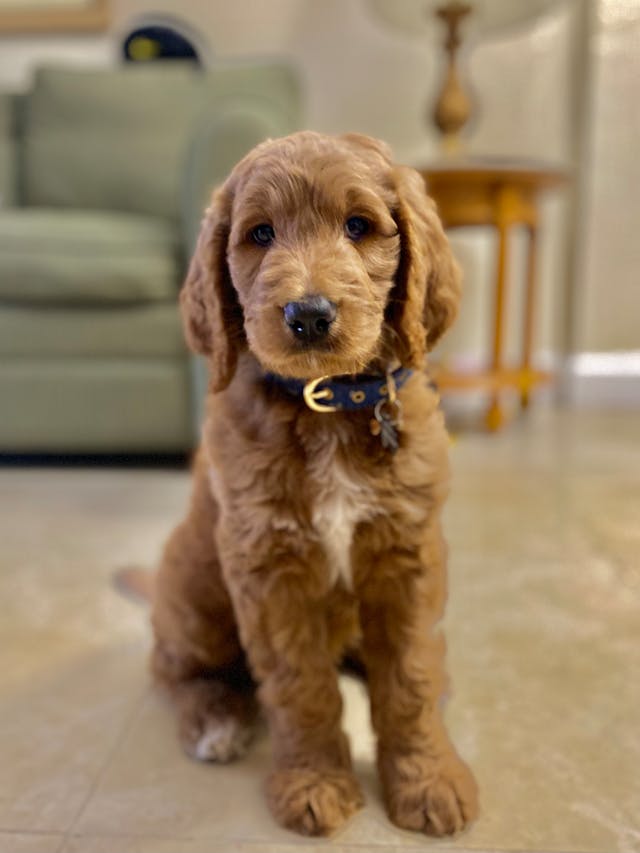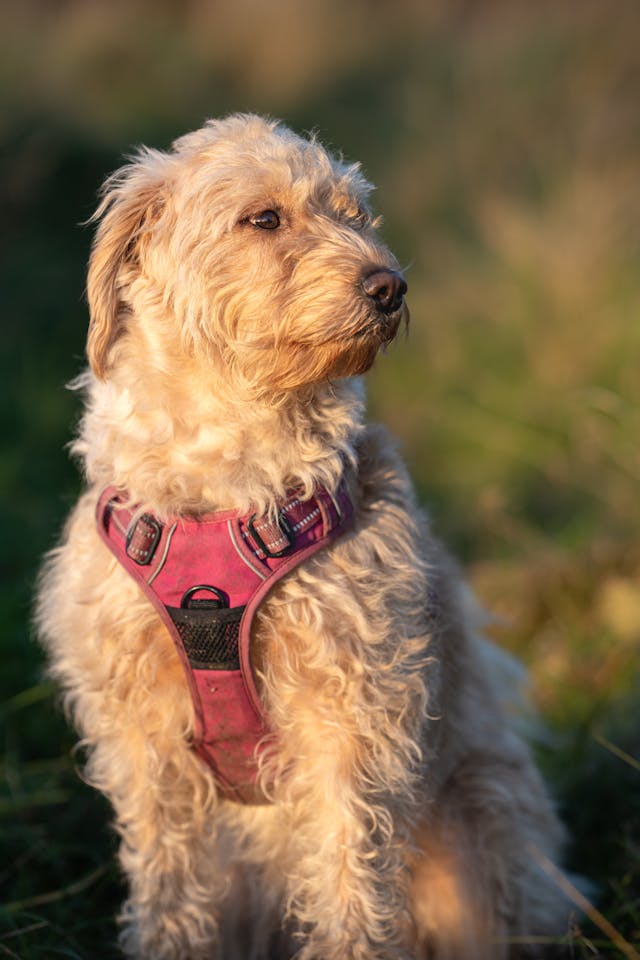When I first brought home my Labradoodle, I was fascinated by how much he could “talk” without saying a word. Understanding Labradoodle’s 7Body Language It took time, but I began to notice how his posture, tail, and even his eyebrows told me what he was feeling. A quick head tilt often meant curiosity, while lowered ears and wide eyes revealed uncertainty. Every little movement became part of his physical vocabulary, and I slowly learned to decode these visual cues. Understanding his body language became the key to building trust and connection. He’d use his body to express his needs, and as I listened more, our bond grew deeper.
As someone who has lived with Labradoodles for years, I can say their way of communicating is one of the most rewarding things to experience. You don’t need to be an expert to start “speak dog,” but paying attention to the small signals helps. A raised tail might show confidence, while tucked posture could reflect nervousness. Their reactions always mirror how they feel. The more we tune into this silent language, the easier it becomes to raise a truly happier pooch. That unspoken bond between you and your Labradoodle starts with just watching, learning, and being present every day.
Table of Contents

What That Tail Is Really Saying
When I first noticed how much my Labradoodle’s tail moved in different ways, I thought it just meant he was happy. But over time, I realized a wagging tail could mean many things. A loose, relaxed wag off to the sides showed he was calm and content, but a quick, high, and stiff wag often meant he was alert or even stimulated. Once, when he tucked his tail between his legs, I could tell he felt insecure or afraid. His emotional state came through clearly when I looked beyond just how fast it was wagging. Each moment held clues—was it a tight, circular wag, possibly signaling potential aggression, or a tiny, rapid tremble of anxiety?
I’ve learned that reading the context around his tail movements is everything. A slow, stiff wag could show uncertainty, while a broad, vigorous wag might mean he’s overexcited, not just eager. When he holds it low or high, it changes the message, depending on how it’s held and the speed and direction. The language of your Labradoodle‘s tail isn’t just about excitement—it’s a full-on conversation. Paying attention to the full picture helps you better determine what your dog is really saying, and that’s where the real connection begins.
Key Tail Movements and What They Mean
- Relaxed Tail Movements
- Loose, relaxed wag to the sides: Content, calm
- Broad wag at mid-height: Happy, eager
- Alert or Nervous Indicators
- Quick, high, stiff wag: Alert, stimulated
- Tucked tail between legs: Insecure, afraid
- Tiny, rapid tremble: Anxious, nervous
- Uncertainty or Aggression Signals
- Slow, stiff wag: Uncertainty
- Tight, circular wag: Potential aggression
- Broad, vigorous wag: Overexcited
- What to Watch For
- Tail held high or low = Different emotional tones
- Observe the speed, direction, and context
- Always consider full body language to determine emotional meaning
Ears: Mood Radar
- Erect and forward: Highly alert or curious
- Relaxed sideways: Calm and content
- Flattened back: Worried or anxious
- Perked up, tilting forward: Focused intently
- Pinned back tightly: Potential aggression
- Ears rotate and shift: Pick up cues and communicate emotional states
- Ears up and bright: Tuned in to the environment, ready to explore or engage
Eye Contact and Gazes
- Direct eye contact: Shows confidence in dogs and can signal a social bid or challenge.
- Soft eyes: Indicate your Labradoodle is relaxed and friendly.
- Squinty grin: Shows positive anticipation.
- Wide eyes: Suggest curiosity or surprise.
- Short glances away: Can indicate polite deference.
- Locked stare: May signal a potential threat or aggression.
- Avoiding eyes: Suggests discomfort.
- Whale eye (showing white): Indicates the dog is feeling uneasy.
- Blinking slowly while gazing at you: A sign of affection.
- Looking away: A form of puppy-like appeasement.
- Following their eyes provides insight into their emotions and state of mind.
Face and Body Posture
Your Labradoodle’s face and body posture can give you a lot of clues about their emotions. When they have relaxed, loose muscles, it means they are content and calm, showing they are comfortable in their environment. On the other hand, a wide alert eye stance and a tall, erect body indicate they are highly attentive, paying attention to something that caught their interest. If you notice your dog in a bowed down play pose, it means they are asking to play! A low, wiggly body shows they are feeling submissive, while a crouched stiff posture can signal fear or anxiety.
A high rigid stance may suggest your Labradoodle is feeling dominant or even challenging the situation or another dog. Small behaviors like lip licking or yawning could show mild stress. If their posture becomes more tense or reserved, it is a sign they might be feeling more uncertain, anxious, or even overwhelmed. On the flip side, when their muscles are loose, it indicates they are a comfy, happy pup, enjoying the moment.

Mouth Signals
Relaxed parted mouth = calm and breathing naturally
Wide panting = excitement or feeling warm
Tense closed mouth = potential aggression
Exposing front teeth = discomfort/threat
Flews pushed forward = confidence
Lips pulled back = signaling correction (warning)
Bared teeth = feeling threatened/challenged
Extended tongue = curiosity or feeling playful
Vocal Cues – Key Points
- Short, sharp barks often signal alerts or alarms, especially when a Labradoodle notices something unusual.
- Extended barking usually means the dog is seeking attention or expressing needs.
- Playful bow-wow-wow’s indicate an invitation to play and a happy, social mood.
- Low grumbles reflect uncertainty or suspicion, especially around unfamiliar people or pets.
- Sustained whines or whimpers suggest stress or a desire for comforting.
- Growling is often a correction or warning, especially when a boundary is crossed.
- High-pitched yelps are signs of pain or surprise, often sudden and sharp.
- Barking, though sometimes misunderstood, is a natural way for dogs to communicate.
- Context is important to fully understand what your Labradoodle is trying to express through its vocal behavior.
Putting it All Together
When I first brought my Labradoodle home, I thought reading his body language would be easy—but it took time to truly understand his inner state. I realized that watching just his tail or ears wasn’t enough. I had to pay attention to everything—his eyes, posture, and even the tone of his vocals. Once I started looking at the full context, each cue made more sense. His physical vocabulary became clearer when I focused on how all the signals worked together.
With a little practice, I began to decode his moods and needs in every moment. Whether he was feeling anxious or playful, reading him fluently helped me bond more closely with my doodle. Now, I feel like I’m almost speaking dog, and he seems more safe and understood. The best part is, it’s not about one signal—it’s about how they all connect. Learning this changed everything for us.
What language do Labradoodles speak?
Labradoodles don’t speak with words like humans do. They “talk” using body language, facial expressions, tail movement, vocal sounds (like barking, whining, or growling), and even their posture. This combination of signals is how they express their emotions, needs, and reactions. By observing these cues, you can understand whether your Labradoodle is happy, stressed, excited, or unsure.

How to read your dog’s body language?
To read your Labradoodle’s body language, pay close attention to different parts of their body working together.
- A relaxed body and open mouth usually means your dog is calm.
- A tail wagging low and slow may show caution, while high and fast wagging could mean excitement.
- Stiff posture, raised hackles, or bared teeth might signal fear or warning.
- Also, notice eye contact, ear positions, and vocal cues. When all signs are read together in context, they reveal your dog’s true feelings.
Why do Labradoodles stare at you?
Labradoodles stare at their owners for several reasons, most of which are positive. They might be:
- Trying to communicate something (hunger, needing to go outside, wanting attention)
- Bonding with you through eye contact
- Waiting for a cue or command if you’re training
- Curious or observing your emotions to respond accordingly
If the stare feels intense and is paired with other tense body signals, it could mean your dog is feeling anxious or unsure, so consider the full body language.
Toy Labradoodle Breed Complete Info, Pics and Fact 2025
Micro Mini Labradoodle Latest Facts, Images & Much More 2025

